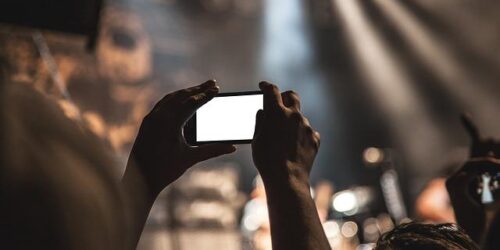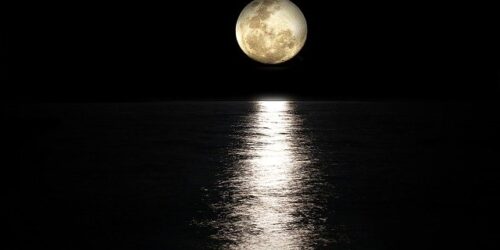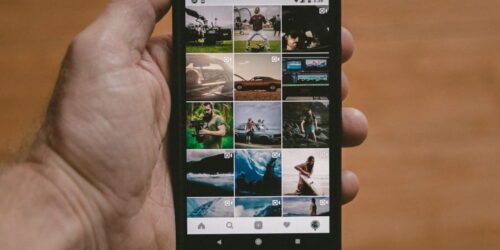The Best Times to Take Outdoor Photos: Understand All the Basics
The answer, of course, depends in large part on what you are photographing. Outdoor photographers like myself spend weeks in the field waiting for extraordinary natural light displays to fully realize their subjects’ potential. Successful outdoor photography requires a thorough understanding of light, how it changes throughout the day, and how to use it to your advantage. Please read on.
Table of Contents
Plan An Outdoor Portrait Photo Shoot
Similar to other outdoor photography photoshoots like astrophotography or landscapes, taking portraits outdoors requires a good deal of planning. That is because where and how we can shoot depends greatly on the weather and the position of the sun. Of course, before leaving, you should check the weather forecast for the shooting location. The forecast will be more accurate the closer it is to the shoot time, but if working in a team, include a cut-off time to prevent disappointing teammates at the last minute.
Additional built-in features can make it simpler to shoot in the ideal location for specific types of outdoor portraits, such as shadow length tracking and golden hour angles. There is no reason not to check this out well before the photo shoot since you can fast-forward and rewind in time.
What is Golden Hour?
There’s a little secret in how photographers get that magical, perfect, flattering lighting in their outdoor portraits, and much of this is due to when the photos are taken. There is a short window of time on every sunny day called “golden hour.” This is approximately one hour before the sun sets or one hour after the sun rises.
Location and weather factors affect the golden hour. It requires a location that allows the sun to shine through or at least peek between trees and structures, as well as bright and mostly clear skies with few to no clouds. Golden hour light will not produce the same overall effect as cloudy days or locations with lots of shade.
What is Blue Hour?
Like golden hour, blue hour is also found around sunrise and sunset, except it is the short period (perhaps 20 or 30 minutes) immediately before sunrise or after sunset, when the sun is below the horizon and not directly illuminating your subject.
Portraits taken during the blue hour will have a blue tint and a moodier quality.
Sunrise & Morning Portraits

Although they can be thought of as being the same thing, sunrise and sunset have some significant differences.
The earth rotates overnight and the sun sets, which causes the atmosphere to cool. Depending on the location, condensation of atmospheric moisture onto the ground can result in the formation of dew or even frost. There is a brief window of opportunity to capture the condensation shining in the new light, like jewels glimmering in the background, as the sun rises, before it warms the ground and this moisture evaporates.
It’s possible that the time of day will have an impact on how much sky you include in an outdoor portrait. Because the sun hasn’t heated the ground enough in the morning to support strong thermal convection, clouds struggle to form. This air rising is what causes clouds to form in the sky.
However, the sun’s low position in the sky, which scuds the landscape and casts longer shadows, distinguishes sunrise from sunset. Warmer, lower wavelength light, such as orange and red, is enhanced because the sun must travel through a thicker portion of the atmosphere, which scatters blue light more. This can be used to the photographer’s advantage to add warm, natural side or backlight to emphasize clothing, hair, or facial features.
Because the sun’s intense brightness and the subject’s dark shadowed side are directly opposite each other when the subject is positioned between the camera and the sun, shooting directly into the sun makes it simpler to create silhouettes. However, this darkening of the subject may occasionally be unintentional.
Read about What Is HDR Mode In Photography?
Shoot in the Middle of the Day
The worst time to take outdoor portraits is typically during the middle of the day when the sun is highest in the sky. That’s because shadows that are cast downward on the face by the overhead light can look unflattering.
Because cameras have a limited dynamic range, clear skies will allow for much harsher shadows and a greater difference between highlights and shadows, making it more difficult to capture detail. Of course, the strength of this effect varies depending on where you are on the globe, with locations closer to the equator experiencing more of this effect than those closer to either pole.
But it depends entirely on the desired look for the photographs whether or not this harsh appearance is what you’re going for. However, if it isn’t, there are some ways to soften the glare of the sun above. Changing from a standing to a lying down, facing the camera, position would be the easiest step. According to the subject’s orientation, this would reposition the shadows on the face.
Head for some shade if you want the hard light issue completely eliminated. The shadow of a building, the shade provided by trees, or your own personal shadow cast by a flag (such as the black side of a 5-in-1 reflector) could all be potential candidates.
Avoid straying too far into the shadows, such as when you’re deep within a forest, as it will get darker as you go. We’ll skip the technical jargon behind this and just say it’s because light moves according to the inverse square law. In other words, only go as far into the shade as is necessary to cover the subject. The light intensity is maintained at a level that is consistent with the settings on the original camera.
It might be better to simply diffuse the light a little than completely block it. If that’s the case, a 5-in-1 reflector will provide a diffusion panel to evenly distribute the light, such as the Lastolite Trigrip reflector. Place it between the subject and the sun, and for best results, keep it as close to the subject as you can without it obstructing the shot. The panel can be held either by you, the model, or by placing it on a reflector holder that is attached to a light stand. However, in strong winds, additional weight may be required to stabilize the panel.
A reflector works well if shadows aren’t too bad but you need some fill light to brighten them. Reflector kits are typically available in white, which is used to achieve a soft fill, silver for something stronger, gold for warmer tones, and a silver/gold stripe (also known as a zebra pattern) to achieve a mid-point of warmth between silver and gold.
Other options for fill lighting include studio strobes, which typically require mains power, and flashguns like speedlights. The middle of the day is typically too bright for continuous lighting to be very helpful, so we turn to flash lighting, which can output much brighter light.
Photograph in Evening Light

Sunset light has a similar effect to sunrise, with the exception that it appears on the western side of the sky (depending on location). We can therefore achieve the same side and backlighting as with a sunrise, with the added bonus of being able to capture larger cloud formations in the sky behind our subject because of convection from a warmer landscape.
As more people are awake and moving around compared to early in the morning, the hour just before sunset also tends to be busier. Therefore, there will be more opportunities to take outdoor portraits of people and moving vehicles. This is advantageous for street scenes, especially when attempting to capture more of the commotion of daily life.
Read about How To Take A Picture Of The Moon With iPhone?
Twilight & Night Photos
After sunset, we experience the “blue moment,” when the direct light of the sun has set but the scene is still illuminated by ambient light that has moved through the atmosphere. Since the entire landscape is now shaded, its color temperature is lower, giving it a bluer appearance.
It makes sense to compensate for decreasing light levels by changing the camera’s settings. The image can be made brighter by using a wider aperture, but doing so will result in a shallower depth of field. We can adjust the ISO sensitivity or shutter speed to brighten the exposure if the depth of field must remain constant. The ISO sensitivity setting increases the sensitivity of the image sensor to light, but the higher it is set, the more image noise is introduced, so we want to keep this as low as possible.
When the shutter speed is slower, more light is allowed to reach the image sensor. However, if the shutter speed is too slow, unwanted blur may appear due to subject motion blur or camera shake (if handheld shooting). However, we can take advantage of this by purposefully capturing motion, such as the motion of a car, or by moving the camera purposefully and then using a flash to freeze the subject in the foreground.
Lighting Subjects While Outdoors

Setting up the shoot properly is almost as important as properly lighting our subject. After all, the relationship between light and shadow is at the heart of photography. So it’s crucial to think about how to light outdoor portraits.
Flashguns and studio strobes are probably the best way to add light to portraits outside during the day when the sun is shining brightly. That’s because they produce a tremendous amount of light in a brief period of time to equal or even surpass sunlight. Speedlights are a good portable option and frequently run on AA batteries, making them affordable and available to many. While studio strobes are generally more powerful, they frequently require mains power, making them only useful for shooting close to a power source, though some run on batteries.
Because they can see the impact the light has on the subject and can adjust the camera settings without being constrained by shutter speed synchronization, continuous lighting is preferable for beginners. Where flashguns are ineffective for videography, continuous lights can be used. When compared to flash lighting, this illumination is frequently much dimmer, making it preferable for low-light photography, such as that done at dusk, sunset, or at night.
Choose the Best Time to Shoot Portraits
To take advantage of the best lighting, many photographers plan their sessions for the evening. (Some photographers even consider golden hour light to be a part of their brand and will reschedule a session if the weather doesn’t permit them to achieve this look!)
Photographers can download apps that provide the best times and directions for the desired lighting type. To schedule a session and determine how long you should spend at each location for the best results, use apps, tools, or sunset calculators.
Remember that not every type of photo shoot requires or benefits from using golden hour light. For instance, the blue hour, which occurs before sunrise or after sunset, may be best for capturing serene or heartfelt portraits, while midday light may be better for capturing sports and action, and night photography may look incredible for events and urban settings.
You can choose the ideal time to shoot for each type of session by keeping an eye on sunset times throughout the year and personally visiting desired locations to observe how the light affects them at various times.
Conclusion
If you want to capture gorgeous photos, you must understand the best time to take outdoor photos.
There really isn’t any “best” time for outdoor photography. What you are shooting and your artistic goals will determine when is best to take the shot. As a result, twilight, sunrise, and sunset are probably your best options for taking beautiful outdoor pictures, but you should also experiment with other times of day. Don’t count on getting a lot of sleep!
In this manner, you can always take photos in the softest, most attractive light.





